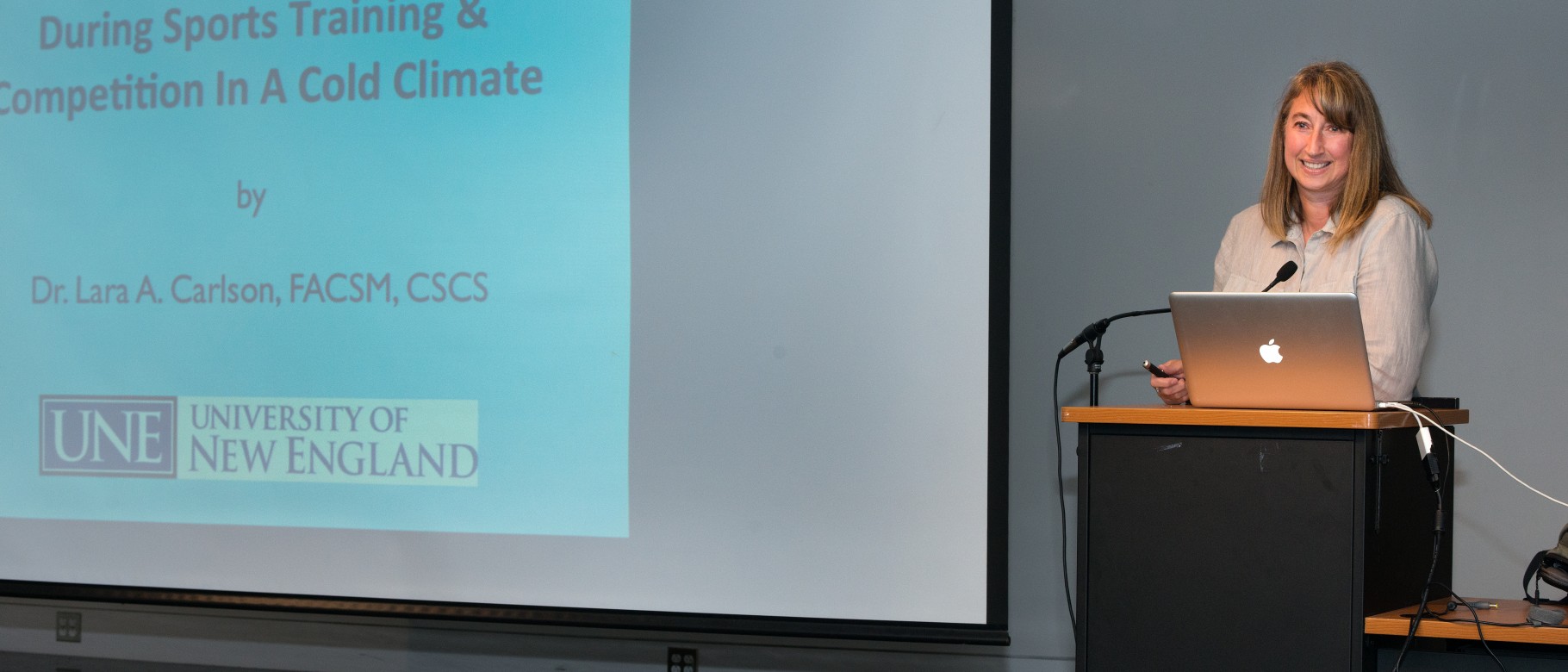Training in the cold: UNE's Lara Carlson shares expertise in Maine and the Arctic Speaker series

Lara Carlson, DPE , FACSM, CSCS, associate professor in the Department of Physical Therapy and the Center for Excellence in the Neurosciences, gave a presentation titled “Cool Runnings: Challenges During Sports Training and Competition in a Cold Climate” as part of the Maine and the Arctic Speaker Series at the Portland Public Library.
Carlson has experience in the region. She brought her Environmental Physiology course to Iceland in 2013 and again in 2014 to conduct research in the Þórsmörk region- a mountain ridge named after the Norse god Thor and is situated between the glaciers Tindfjallajökull and Eyjafjallajökull.
During her talk, Carlson explained that whether it’s seasonal changes or arctic climates, cold temperatures do not stop individuals and athletes from training and competing. Carlson explained that heat is produced by our metabolism and muscle contraction, which contribute to heat production. When heat loss exceeds that of heat production, the body’s core temperature can decrease and lead to decreases in performance and possibly hypothermia. A cold exposure will trigger the body to physiologically respond by peripheral vasoconstriction – a decrease in skin blood flow, and shivering thermogenesis. An individual exercising in the cold will lose heat primarily via radiation, convection and evaporation.
Most people are aware of the risks for cold exposure, which would include hypothermia, frostbite, and exercise induced bronchospasm (EIB) that may result from the exposure to cold, dry air during increased ventilation. Carlson recommends that during training or competition in a cold environment, athletes should maintain good hydration. Eating carbohydrates is also recommended since research suggests that more muscle glycogen is depleted when lightly exercising in a cooler temperature as compared to room temperature (70°F). A consequence of this may lead to fatigue during exercise. Athletes should also dress in layers, but it’s important that those layers stay dry. Clothing insulation is reduced if it becomes wet, even if from sweating. Athletes should, therefore, replace wet with dry clothing.
As far as performance, research has reported that the cold can slow nerve conduction velocity, which can reduce muscle strength and power. Shivering may also cause a loss in fine motor control, which can impact certain sports. Athletes should attempt stay warm on the sidelines, and maintain flexibility to avoid muscle strain. And finally, the large increase in metabolic heat production with exercise coupled with too much layering of garments (increased insulation), it is possible for an individual to actually experience heat illness in the cold.
To learn more about the University of New England’s Westbrook College of Health Professions visit www.une.edu/wchp
To apply, visit www.une.edu/admissions